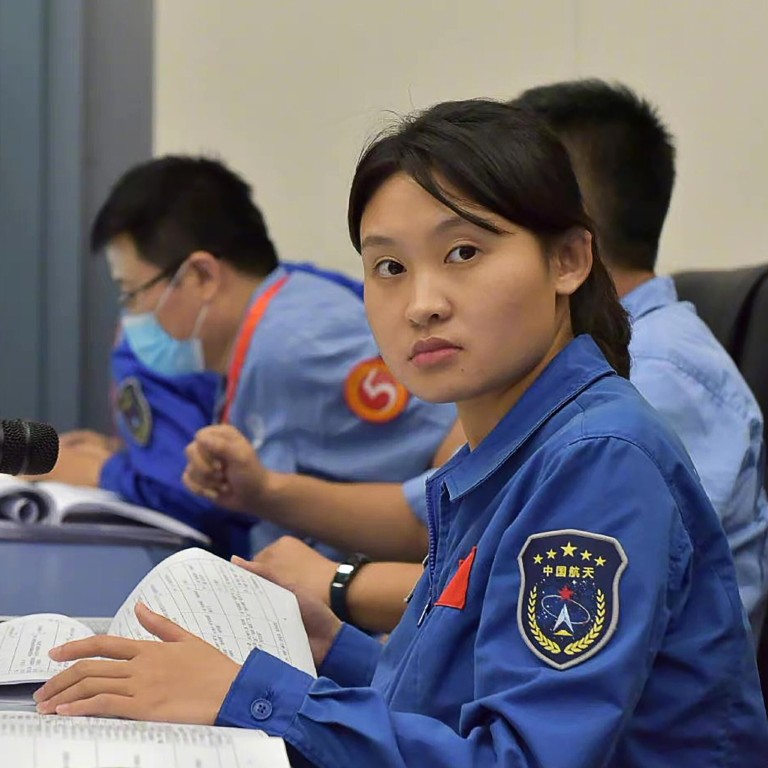
China’s space programme: how Beijing is banking on youth to drive its celestial ambitions
- It may be a relative newcomer to space exploration, but China is hoping its young engineers and commanders can lead it to infinity and beyond
- A space station is planned for 2022, and more lunar and Mars missions are all on the cards
China sent its first astronaut into space in 2003, 10 years after the launch of its space programme and four decades after the former Soviet Union and the United States had done the same.
In the years since, the China National Space Administration (CNSA) has gone from being a late mover to a serious contender in the global space race.
According to state media, the average age of the people involved in China’s space programme is falling. Broadcaster CGTN reported last year that the average age of many of the teams involved on space projects was about 30.
Between 1992 and 2003, the average age of rocket designers fell by 18 years, Communist Party mouthpiece People’s Daily reported in 2007. The same year, the average age of project managers at the Beijing Aerospace Control Centre was 30, it said.
China’s youngest and first woman space commander is 24-year-old Zhou Chengyu, who became a viral sensation last year for being in charge of the rocket connector system in the Chang’e 5 mission to bring moon rocks back to Earth.
“The large number of people entering the sector in the mid-2000s allowed China to have a diverse variety of space programmes,” said Blaine Curcio, founder of Hong Kong-based Orbital Gateway Consulting, a research firm that focuses on space and satellite telecommunications.
“Part of that is because we have people who don’t want to leave,” she said. “We have scientists who are still writing significant papers in their 80s.”
China’s Zhu Rong Mars rover off and roaming on red planet
A 2018 report by the US Government Accountability Office said about half of Nasa’s workforce was over 50.
However, Nasa’s space programme is much older than China’s, having started in 1958, while China’s space programme only truly kicked off in 1993, with the creation of the CNSA.
“While the average age of engineers and scientists in a space mission brings enthusiasm, energy and a broad-based education, especially if they are in the 25-35 age group, it is usually seen that the leadership of the overall space mission is older,” said Namrata Goswami, an independent expert on space policy based in Montgomery, Alabama.
The chief designer of China’s lunar exploration project, Wu Weiren, was 68, while Ye Peijian, who led the project and was a key researcher on lunar missions, was 76, he said.
Curcio said: “The success of a mission is not necessarily related to the needs of the people working on it. But in China, there is an old guard – those who have been in the industry for about 30 years and still playing an active role.
“With many more young recruits, the old guard will be managing a larger number of projects. Their role remains very important … and would evolve from doing specific tasks to managing projects.”
Still, a young workforce could give China an edge for its future missions, Goswami said.
“While an older generation sits at the implementation level, it is the younger workforce that could affect overall efficiency in meeting deadlines,” he said.
After a quiet 2020 because of the coronavirus, China plans to conduct more than 40 space launches this year. It launched 39 rockets in 2018 and 34 in 2019, more than any other country.
Beijing’s top priority is the completion of its space station by 2022. It also plans to send a second probe to Mars by 2028, with the aim of bringing samples back to Earth, and missions to Jupiter and Venus are pencilled in for 2030.
The CNSA said it was aiming to launch the super heavy-lift rocket Long March 9 by 2030 and reusable rockets by 2035. More lunar missions are on the schedule, with the eventual aim of building a lunar base within the next decade.
In an interview in 2011, Chinese rocket scientist Sun Jiadong, now 92, praised the “youthful, energetic team” behind China’s space programme.
“The younger generations are passionate, conscientious at work and fast learners,” he said. “They will make strong contributions to the future of China’s space industry.”

